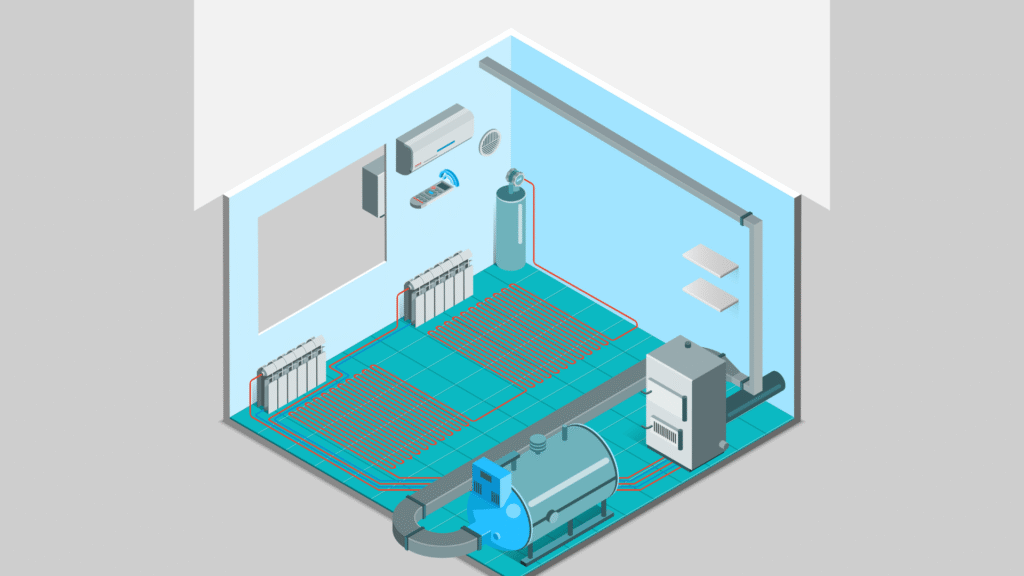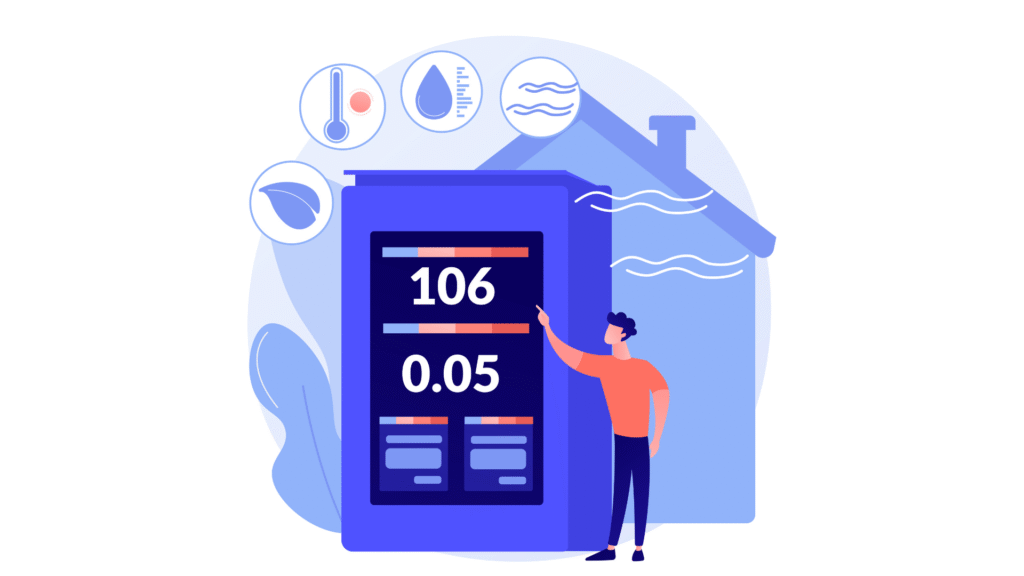
Controlling the indoor climate in a large commercial building with an HVAC system can be a real challenge. Unlike small offices or homes, large buildings have many areas with very different needs. For instance, some rooms are filled with people and therefore require extra cooling. On the other hand, areas such as storage rooms or meeting spaces may need heating or a steady airflow. As a result, managing comfort across the entire building requires a smarter approach.
This is why HVAC zoning systems are so important. Zoning divides a building into multiple zones. Each zone has its own thermostat and controls. As a result, comfort improves, energy waste drops, and costs go down.

In this guide, we will explain:
- What HVAC zoning is
- How it works
- Why it’s important for large buildings
- The benefits for owners, managers, and tenants
- The best places to use zoning
- Answers to common questions
What is HVAC Zoning?
HVAC zoning means splitting a building into separate climate zones. Each zone can be heated or cooled independently. This is done with thermostats, dampers, and smart controls.
For example, the sunny side of an office may need more cooling. On the other hand, shaded conference rooms may need heating. Without zoning, the HVAC system tries to treat the building as one space. This leads to hot spots and cold spots.
With zoning, the system only works where it is needed. Therefore, it improves comfort and reduces energy use at the same time.
How Does an HVAC Zoning System Work?
A zoning system is built with a few key parts.
- Thermostats
- Each zone has its own thermostat.
- The thermostat tells the system when to heat or cool.
- Each zone has its own thermostat.
- Motorized Dampers
- Installed in the ductwork.
- Open and close to direct airflow into the right zone.
- Installed in the ductwork.
- Central Control Panel
- Connects all thermostats and dampers.
- Works as the brain of the zoning system.
- Connects all thermostats and dampers.
- Smart Sensors
- Advanced systems use occupancy and air quality sensors.
- These adjust airflow automatically.
- Advanced systems use occupancy and air quality sensors.
Together, these parts make sure air goes exactly where it is needed. This means less waste, more control, and better comfort.
Why Large Buildings Need HVAC Zoning
1. Improved Energy Efficiency
In fact, zoning prevents wasted energy. Instead of heating or cooling the entire building, the system works only in occupied areas. As a result, utility bills are much lower.
2. More Comfort for Everyone
With HVAC zoning, every area gets the right temperature. As a result, no space is too hot or too cold. In addition, this balance ensures comfort for everyone inside the building. Employees, tenants, patients, or guests enjoy a consistent and comfortable environment.
3. Cost Savings Over Time
Zoning systems may cost more at first. However, they quickly begin to save money by reducing energy use. In addition, they help lower repair and maintenance costs. Over time, these savings steadily add up. As a result, the long-term benefits outweigh the initial investment. Ultimately, zoning proves to be a smart and cost-effective choice for large buildings.
4. Longer Equipment Life
Because the HVAC system does not run at full capacity all the time, it lasts longer. In fact, less strain on the system means parts wear out more slowly. As a result, there are fewer unexpected breakdowns. In addition, the need for costly replacements is reduced. Ultimately, this not only extends the lifespan of the equipment but also lowers maintenance expenses.
5. Better Control and Flexibility
Facility managers can control each zone separately. For example, they can cool occupied offices during the day. At the same time, they can save energy in empty meeting rooms. In addition, zoning allows managers to adjust temperatures based on changing needs. As a result, employees stay comfortable while the building uses less energy. Ultimately, this leads to both improved efficiency and lower costs..
Where is HVAC Zoning Most Effective?

Not every building needs zoning. However, large buildings benefit the most.
- Office Buildings – Each department or floor often has different needs.
- Hospitals and Healthcare Facilities – Patient comfort and equipment protection require precise control.
- Schools and Universities – Classrooms, labs, and auditoriums need different conditions.
- Hotels and Resorts – Guests expect personalized comfort in every room.
- Shopping Malls – Stores and food courts all have unique requirements.
- Industrial Sites – Machines, storage, and office areas require separate temperature controls.
In other words, any large or mixed-use property can gain value from zoning.
Benefits of HVAC Zoning for Large Buildings
When done right, zoning systems bring many benefits:
- Consistent comfort across all spaces
- Lower utility bills and operating costs
- Improved indoor air quality with controlled airflow
- Eco-friendly performance with less energy waste
- Extended life of HVAC equipment
- Flexibility for tenants and managers
- Smooth integration with smart thermostats and BAS (Building Automation Systems)
Therefore, HVAC zoning is not just an upgrade. It is a long-term solution for efficiency and comfort.
Frequently Asked Questions
Q1: Is HVAC zoning expensive?
Yes, the initial cost is higher. However, savings on bills and repairs usually cover the cost within 2–5 years.
Q2: Can I add zoning to an existing HVAC system?
Yes. Many systems can be retrofitted with thermostats, dampers, and controls.
Q3: How many zones can a building have?
It depends on size and design. Some systems manage just a few zones. Others support dozens across multiple floors.
Q4: Does HVAC zoning work with smart thermostats?
Absolutely. Zoning works best when combined with smart thermostats and automation.
Q5: Is zoning only for new buildings?
No. While easier in new construction, existing buildings can also upgrade.
Conclusion
To sum up, HVAC zoning for large buildings is a smart choice. It brings better comfort, lower energy costs, and longer system life. It also gives managers and tenants more control.
👉 At Mattix, we design and maintain HVAC zoning systems for offices, hospitals, malls, schools, and hotels. Whether you are planning new construction or upgrading an existing system, we can help.
Contact us today to learn how zoning can transform your building’s performance.

